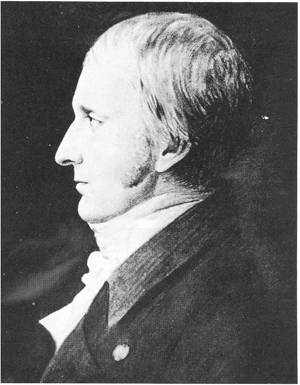Thomas Wedgwood Biography - A Pioneer of Photography
Thomas Wedgwood (1771 - 1805) from England pioneered photography. This was believed to be the first idea to capture an image using chemicals and optical instruments.
Thomas Wedgwood was born on 14 May 1771 as the third surviving son of Josiah Wedgwood, the famous potter. He was born in Etruria, Staffordshire, near Stoke-on-Trent in England. His father was a member of the Lunar Society, a club of scientists and intellectuals, and Thomas was in the company of painters, sculptors, and poets from the beginning of his life. In his early years, he was educated at home. When he was 15, he enrolled at Edinburgh University and stayed there for two years until his chronic illness (persistent headaches) prevented him from completing his studies. He was interested in educating children and found out that the majority of information children receive through sight. This focused him on images.
We don't know when precisely started experimenting with chemicals and light. Still, it is believed that he began before 1800 because there is a letter from James Watt to Thomas's father, Josiah, where Watt thanks Josiah for instructions for "Silver Pictures" (pictures made by the lightening of silver nitrate) and how James Watt will experiment with them. One of the ideas is that Thomas knew about silver nitrated and that it was his idea how to use it for making images. Thomas used paper and white leather coated with silver nitrate to make the first images and noticed that leather is more light-sensitive. His main idea was to use camera obscura in his process, but his chemicals were not sensitive enough and needed too much time to show any effect.
Still ill, Thomas went to the Pneumatic Clinic in Bristol, where he met Humphry Davy, chemist, and inventor. In 1802, Davy wrote a text in London's "Journal of the Royal Institution" with the title "An Account of a Method of copying Paintings upon Glass, and of making Profiles by the agency of Light upon Nitrate of Silver, invented by T. Wedgwood, Esq., with Observations by H. Davy". The text explained Wedgwood's experiments and results and how Davy influenced them. "Royal Institution" was not too powerful at the time, nor was its Journal, but this text inspired other scientists. It was mentioned in chemistry textbooks that were published as early as 1803. The text was also later translated into French and German in 1811. The problem with these images was that Wedgwood and Davy didn't know how to prevent the image from darkening once they got the desired image (to "fix" it). The resulting image would continue to darken on light, which could be preserved only if the image was kept in darkness. If not, photos would turn completely dark. Because of that, it is not known if any of those images survived.
In 2008 a photogram appeared that was presumed at first to be Talbot's (Henry Fox Talbot, one of the pioneers of photography and inventor of calotype). It represents an internal structure of a leaf and is marked in one corner with something that looks like the letter "W." Talbot expert Larry Schaaf thinks that it isn't Talbot's photogram (today's name for shadow photographs) and that it could be by Thomas Wedgwood and that it could be dating from the 1790s. Photogram was intended to be sold at the auction and to achieve a seven-figure price. A few days before the sale, the photogram was withdrawn to be thoroughly analyzed, but it never appeared on the scene again. If it were authentic Wedgwood, it would be an important historical and scientific object.
